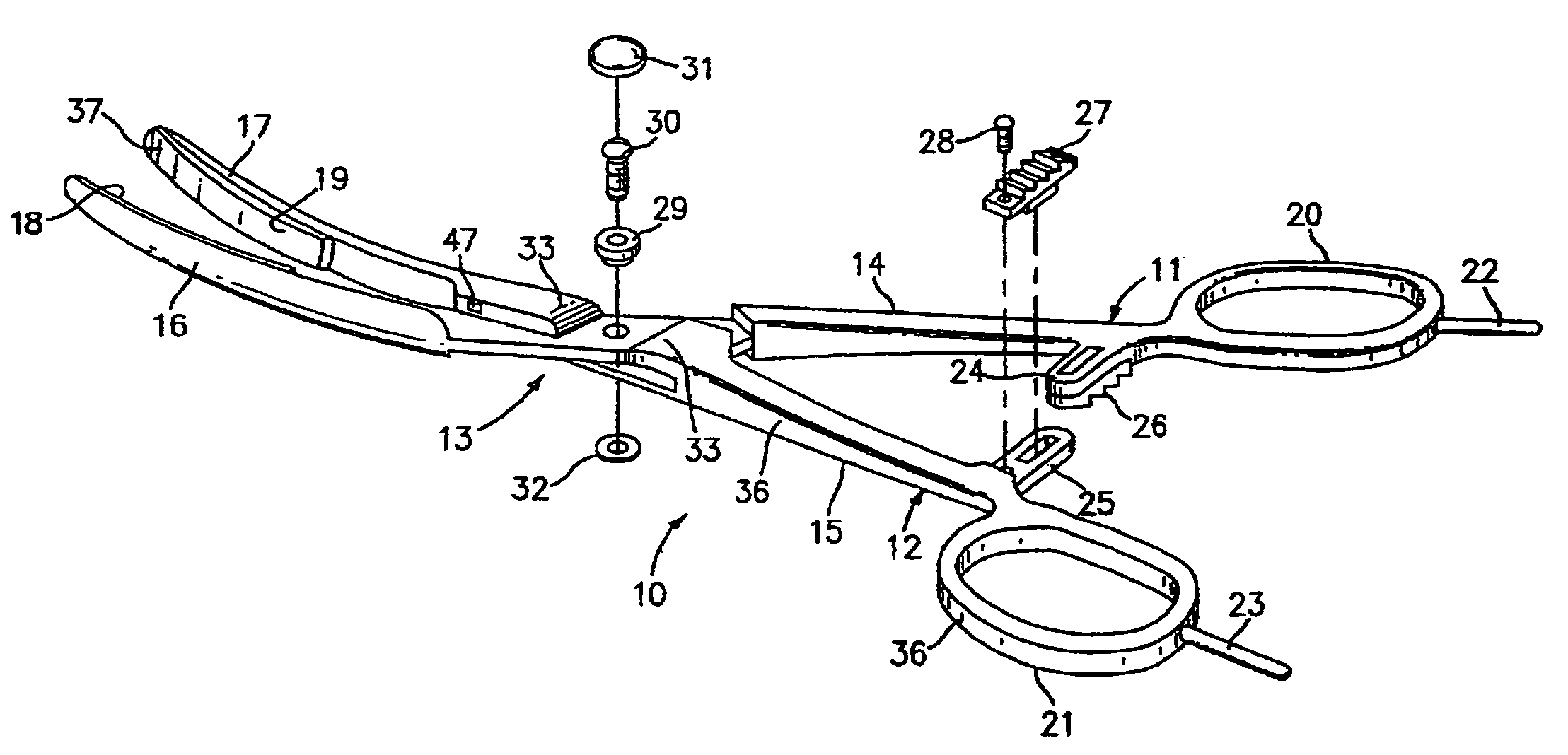Bipolar electrosurgical instrument for sealing vessels
a technology of electrosurgical instruments and blood vessels, applied in the field of electrosurgical instruments, can solve the problems of inability to apply the correct pressure to the blood vessel, the instrument is not designed to seal the blood vessel with a diameter larger than about two millimeters, and the simplicity and familiarity of the instrument are not combined, so as to improve the efficiency of the surgical procedure, reduce the time of operation, and improve the access to target tissues
- Summary
- Abstract
- Description
- Claims
- Application Information
AI Technical Summary
Benefits of technology
Problems solved by technology
Method used
Image
Examples
Embodiment Construction
[0052]Referring to FIG. 1, the instrument 10 has an inner member 11 and an outer member 12. The members 11 and 12 are connected through an open lockbox 13 which has a gap between flanges 33. The terms “inner” and “outer” are used to distinguish the members 11 and 12, and their component parts, according to the members' respective positions at the open lockbox 13. The inner member 11 is fitted generally within the inner surfaces of the open lockbox 13 and is captured by the flanges 33. The outer member generally forms the outside surfaces of the open lockbox 13.
[0053]The inner member 11 has an inner shank 14, an inner jaw 16, and an inner ring handle 20. Similarly, the outer member 12 has an outer shank 15, an outer jaw 17, and an outer ring handle 21. The ring handles, 20 and 21, are designed for a surgeon to hold and manipulate the instrument 10. The jaws, 16 and 17, are designed to grasp tissue between the opposing seal surfaces 18 and 19.
[0054]Each shank, 14 and 15, has a respect...
PUM
 Login to View More
Login to View More Abstract
Description
Claims
Application Information
 Login to View More
Login to View More - R&D
- Intellectual Property
- Life Sciences
- Materials
- Tech Scout
- Unparalleled Data Quality
- Higher Quality Content
- 60% Fewer Hallucinations
Browse by: Latest US Patents, China's latest patents, Technical Efficacy Thesaurus, Application Domain, Technology Topic, Popular Technical Reports.
© 2025 PatSnap. All rights reserved.Legal|Privacy policy|Modern Slavery Act Transparency Statement|Sitemap|About US| Contact US: help@patsnap.com



